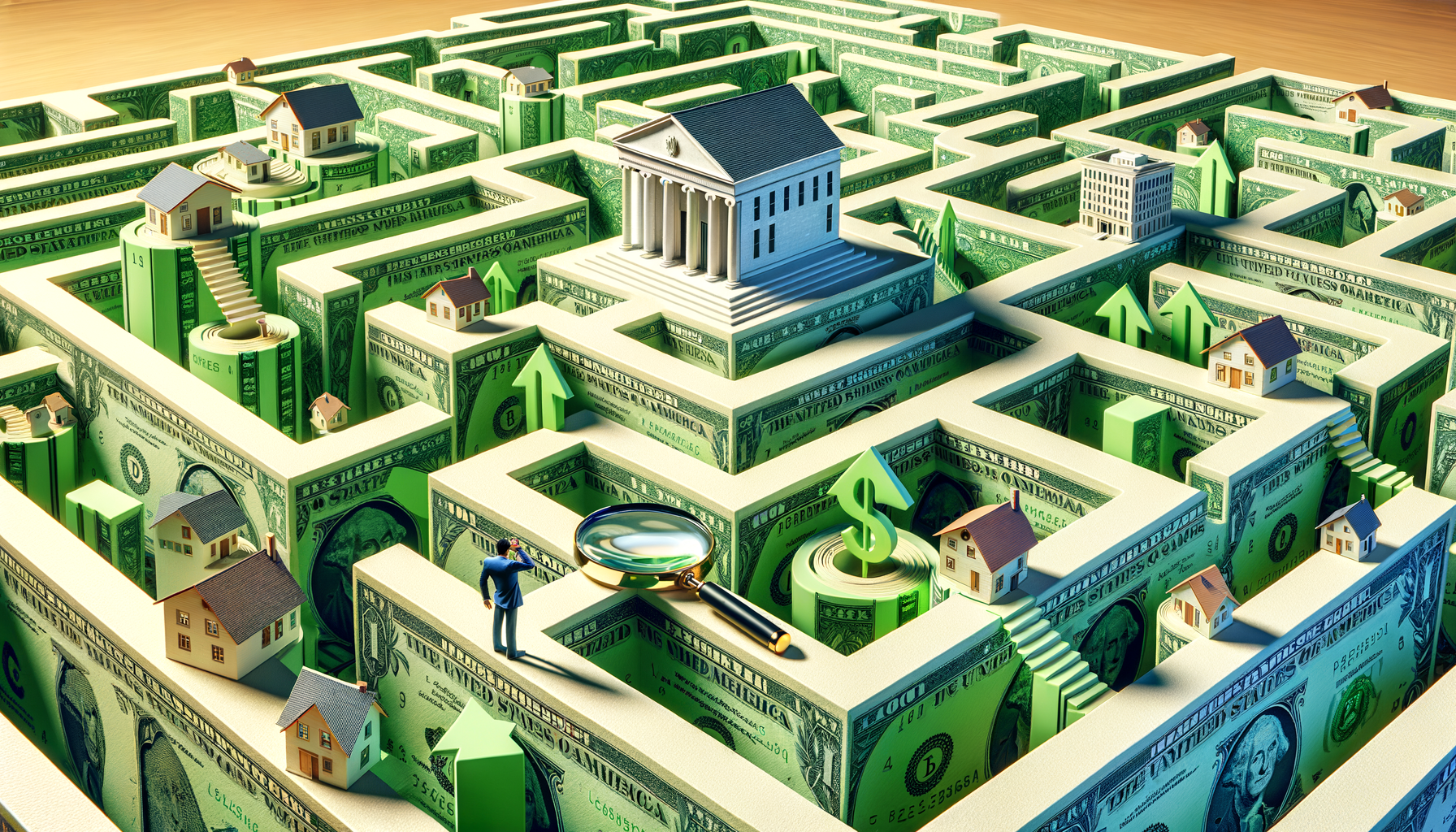“An In-depth Look at the Future of Mortgage Rates: Analysis and Predictions for 2024”
As of late, understanding the labyrinthine world of mortgage rates might seem especially daunting. Today, we’re going to decode this concept, focusing particularly on the recent market behavior and what potential homebuyers can expect.
### What Shapes Mortgage Rates?
To start, mortgage rates aren’t random numbers pulled out of thin air. They are meticulously calculated figures influenced by a wide array of economic factors and indices. The ‘prime rate,’ ‘libor rate,’ federal funds rates, and the activity within bond markets like the trading of U.S. Treasury notes all play pivotal roles. These factors act as indicators of the broader economic environment, swaying mortgage rates in response to changes in financial conditions.
### Current Mortgage Rate Environment
In the United States, mortgage rates have experienced fluctuations that are largely a reflection of current economic policies and the broader global economic climate. Over the past months, rates have been adjusting in response to inflation expectations and fiscal policies. Generally, when inflation is expected to rise, mortgage rates follow suit as lenders need to maintain their profit margins.
### Breaking Down the Types of Rates
Mortgage rates come in several flavors, each suited to different types of borrowers and financial strategies:
1. **Fixed-Rate Mortgages (FRM):** These loans maintain the same interest rate for the entire duration of the loan, which can typically be 15, 20, or 30 years. They’re ideal for individuals who seek stability in their monthly payments and are planning to stay in their home for a long time.
2. **Adjustable-Rate Mortgages (ARM):** Unlike FRMs, ARMs start with a fixed rate for a set period, after which the rate adjusts at predefined intervals. This type can be suitable for those who anticipate an increase in earning potential or plan to sell their home before the rate adjusts.
3. **Interest-Only Mortgages:** Here, the borrower pays only the interest for a certain period, after which they start paying both the principal and the interest. This can reduce initial payments but result in higher total costs over the life of the loan.
4. **FHA Loans:** These are government-backed mortgages that are designed to help lower-income borrowers get into housing. They typically offer lower down payments and have less stringent qualifications than conventional loans.
### The Direct Impact of Economic Indicators
Economic indicators have a direct impact on the rates set by lenders. Key indicators include:
– **Gross Domestic Product (GDP):** This is a broad measure of overall economic activity and health. A stronger GDP often leads to higher mortgage rates as it indicates a robust economy.
– **Employment Rates:** Higher employment suggests a stronger economy, which can lead to higher rates due to increased demand for home loans.
– **Consumer Price Index (CPI):** An essential measure of inflation, the CPI helps gauge the purchasing power of the U.S. dollar. Rising CPI typically pushes mortgage rates up.
– **The Federal Reserve:** While not an economic indicator per se, the Fed’s policies heavily influence mortgage rates. When the Fed increases its rates, mortgage rates tend to climb, as the cost of borrowing money becomes more expensive.
### Recent Movements in Mortgage Rates
As of the latest analyses, mortgage rates have seen a slight rise, attributed partly to ongoing global economic recovery efforts, inflation concerns, and shifts in government fiscal policies. What’s crucial here is understanding that while rates are increasing, they are doing so within a context of recovery from historically low figures observed during global economic downturns.
### How Does This Affect You?
If you’re considering purchasing a home or refinancing your mortgage, these fluctuations in rates can significantly impact your decision-making process.
1. **For Homebuyers:** It’s essential to monitor rate predictions and economic trends. Higher rates mean higher monthly payments, so consider locking in a rate if predictions suggest further increases.
2. **For Homeowners Thinking About Refinancing:** If your current mortgage has a higher rate than those currently available, now might be a good time to refinance and lock in a lower rate.
3. **Real Estate Investors:** Rate trends can indicate the best times for investment. Lower rates usually increase property demand and hike prices, while higher rates might cool down the market.
### Preparing for Future Changes
Predicting future mortgage rates with utmost precision is challenging due to the volatile nature of economic factors that influence them. However, staying informed about economic trends and maintaining a good credit score can help you secure favorable rates.
### Conclusion
Mortgage rates are a complex but critical part of the housing market puzzle. Understanding the interplay between economic trends and mortgage rates can help you make informed decisions whether you are buying a home, refinancing your mortgage, or investing in real estate. Although current trends point towards increasing rates, this should be viewed within the broader context of a gradually stabilizing global economy and historical data.
The road might look a bit bumpy, but with the right knowledge and strategies, navigating through the world of mortgage rates can be significantly less intimidating. Whether you’re a first-time homebuyer, a seasoned homeowner, or a real estate investor, staying informed and being proactive about your mortgage strategy is crucial in this dynamic market.

